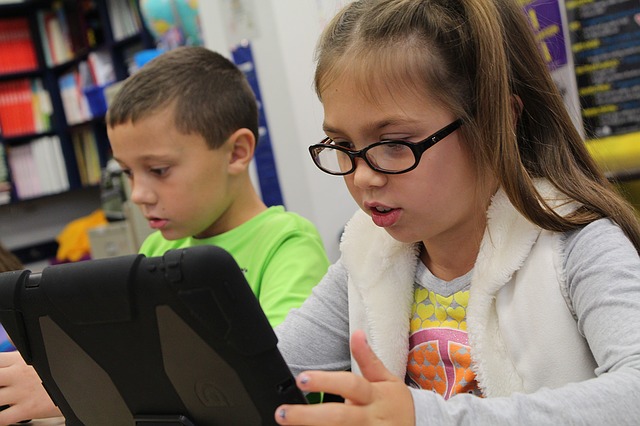By Zahavit Paz
Table of Contents
ToggleUnderstanding the Basics of Vision Therapy and for Dyslexia and ADHD
Vision therapy is an eye training regimen used to improve vision skills such as eye movement control and eye coordination. It is generally not concerned with the strengthening of eye muscles. One can consider it a type of physical therapy for the eyes and brain. It is a non-surgical treatment for visual problems such as lazy eye, convergence insufficiency, and some reading and related learning disabilities.
Vision therapy may be used as adjunctive therapy in the treatment of Learning Disabilities, Dyslexia and ADHD conditions. Most optometrists do not claim that vision therapy will directly resolve a learning disability, but that indirectly it can help with visual problems that interfere with reading and educational instruction.
As an example, where vision therapy can be used as part of the treatment of a learning disability, consider that researchers at the Children’s Eye Center, University of San Diego, uncovered a relationship between a common vision disorder, convergence insufficiency, and ADHD.
Convergence Insufficiency is a condition in which your eyes do not work as a team when looking at nearby objects. One eye will turn outward instead of inward with the other eye, creating double vision or blurred vision. In and of itself, CI is not classified as a Learning Disability, but it can affect the process of learning. “The researchers found an apparent three-fold greater incidence of ADHD among patients with CI when compared with the incidence of ADHD in the general US population.
They also noted a three-fold greater incidence of CI in the ADHD population. Convergence insufficiency responds well to vision therapy and should be treated.
Some of the symptoms of Convergence insufficiency include:
- Difficulty in reading, where words appear to float on the page causing you to lose your place and to read more slowly – this may cause you to avoid reading and cause lack of completion of schoolwork
- Double or blurred vision
- Difficulty concentrating and loss of comprehension
- Short Attention Span
The symptoms of convergence insufficiency (CI) can make it difficult for a student to concentrate on extended reading and overlap with those of ADHD. If you are concerned about your child’s vision and how it may affect reading, it is important to start with a “comprehensive” eye exam.
Another condition that may benefit from Vision Therapy is Dyslexia. Dyslexia is a language problem, not a vision problem. Children with dyslexia have problems decoding or sounding out letters. The American Optometric Association says that Vision Therapy does not treat dyslexia directly, but can be useful in that it treats visual problems that interfere with reading and learning.
As noted above, there is a relationship between convergence insufficiency and ADHD, and there are professionals who believe that there is also a relationship between Dyslexia and visual issues. Once the vision problem is treated, then the treatment of dyslexia via Multi Sensory Structured Language Education (MSLE) will be more effective.
If a children with ADHD or has dyslexic, vision therapy may help improve skills such as focusing, tracking, teaming and other skills that are essential foundational tools for reading and learning.
What is Vision Therapy?
Vision therapy is divided into 2 broad categories. Orthoptic vision therapy treats patients with disorders of the visual system: binocular vision and eye movements. While Behavioral vision therapy treats problems including difficulties with visual attention and concentration, also classified as visual processing weaknesses.
These weaknesses present with the inability to focus or shift focus from one area to another. Some believe that poor tracking affects reading skills and interferes with your place on the page leading to a loss of comprehension.
Vision therapy is
- a progressive program of vision “exercises” or procedures
- performed under doctor supervision
- generally conducted in-office, in once or twice weekly sessions of 30 minutes to an hour
- occasionally supplemented with procedures done at home between office visits
- depending on the case, the procedures are prescribed to:
- help patients develop or improve fundamental visual skills and abilities
- improve visual comfort, ease, and efficiency
- change how a patient processes or interprets visual information
- treat problems involving visual attention and concentration
Therapy programs include the use of devices such as:
- corrective lenses (regulated medical devices);
- therapeutic lenses (regulated medical devices);
- prism lenses (regulated medical devices);
- optical filters;
- occluders or eye patches
- electronic targets with timing mechanisms;
- computer software;
- balance boards (vestibular device)
- visual-motor-sensory integration training devices
Conclusion:
Research has shown that Vision Therapy can be an effective treatment for ocular motility problems, binocular disorders, accommodative disorders and visual processing issues.
It is very important to have a comprehensive eye exam to rule out visual processing issues and to have your child evaluated by a team of specialists since many symptoms of ADHD (attention deficit hyperactivity disorder), Dyslexia and visual processing conditions can overlap with one another. Visual Therapy can be of help with the treatment of Learning Disabilities and related conditions indirectly by resolving visual problems that interfere with reading, learning and other skills that support those processes.
Photo Credit: Pixabay



